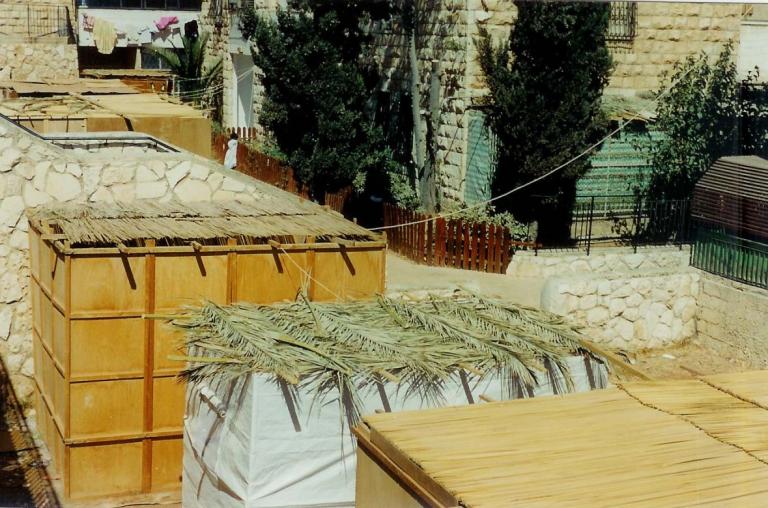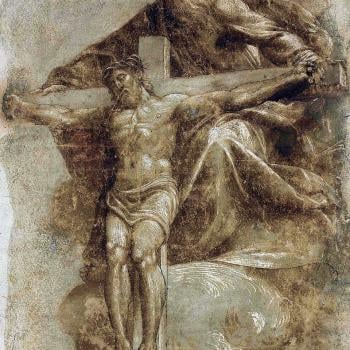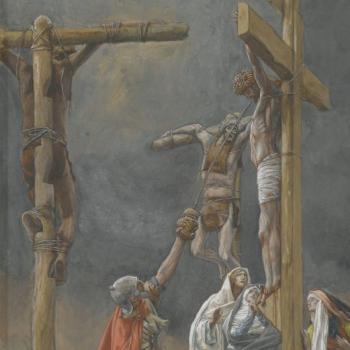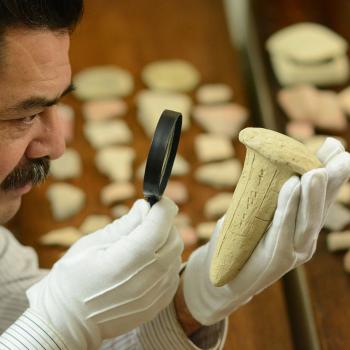
Today marks the beginning of the Jewish pilgrimage festival known as Sukkot, the Feast of Tabernacles. This feast lasts one week. It is one of three pilgrimage festivals in the Jewish tradition. The other two are Passover, which Christians honor at the time of Jesus’ death, and Shavuot, which is also known as the Feast of Weeks or Pentecost, which Christians associate with the Spirit’s descent. As Christians make their way through the church calendar, may we realize that the entire Christian life is one of pilgrimage throughout the years. We will focus on what is entailed by our distinctively Christian pilgrimage in this article.
Before we go further, though, it would be good to provide a brief overview of these Jewish festivals and their historical backdrop. Passover marks the momentous occasion when God commanded each Jewish household to sacrifice a lamb and brush the blood on the top and sides of the door frame of the home so the angel of death would pass over when he destroyed the firstborn offspring of Egypt and delivered Abraham’s descendants from slavery in Egypt (Exodus 12). Shavuot marks the landmark event when God gave Moses the Law at Mount Sinai (Exodus 19-24). The Law signified the way of life the Jewish people were to honor in covenantal communion with God. The third pilgrimage festival, Sukkot, marks the dramatic wandering of Israel in the wilderness for forty years before entering the Promised Land (Numbers 32-33). These three occasions are called pilgrimage festivals because God’s people were commanded to travel to God’s dwelling place, ultimately Jerusalem, and celebrate them according to the instructions provided in the Law (See Numbers 28-29 for a list of these feasts along with other holy occasions).
During the festival of Sukkot, the Jewish people were commanded to live in booths or huts. This tactile symbolism would help the generations to come to remember God’s presence and provision during their wilderness wanderings. It is worth noting here that so much of biblical history focuses on pilgrimage and wandering, including the Exodus and Exile. Add to that how yearly, on three separate occasions, the people of Israel made their way to Jerusalem, the city where the temple stood, and which signified the location of God’s presence.
How does the preceding discussion of Jewish pilgrimage feasts or festivals bear on the Christian life as one of pilgrimage? And what is distinctive about Christian pilgrimage? Regarding the first question, the church’s story is not separate from Israel’s story, but builds and develops it. Thus, we must account for Jewish holy days and festivals, including those pilgrimage holidays already mentioned, as well as Rosh Hashanah (Jewish New Year) and Yom Kippur (Day of Atonement), which were commemorated and celebrated over the past few weeks. These two events are often considered the greatest Jewish religious holidays. Other holy days and festivals include Purim and Hanukkah.
Some Christians may be quick to discount these holidays. But it is hard to make sound sense of Jesus and the church’s mission when we remove the Christian faith from its Jewish roots and source. Jesus did not come to abolish the Law, which contains the underpinnings for these holy days and festivals, but to fulfill the Law (Matthew 5:17). So, if we discount the Law, we unwittingly discount Jesus’ context and make it impossible to grasp his complete story, which includes consideration of Israel’s history.
The New Testament requires Christians to come to terms with the Jewish Scriptures. John’s Gospel records three Passovers (John 2:13, 6:4, 13:1). Luke’s Gospel records Jesus traveling to Jerusalem for the Passover when he was a child (Luke 2:41-42). John 8 alludes to Sukkot. In John 8, Jesus refers to himself as the Light of the world against the likely backdrop of scores of lights streaming from the booths and tents surrounding Jesus and illumining the night sky during the festival in Jerusalem. Hebrews 9-10 highlight the Day of Atonement. Acts 2 places the Spirit’s descent on the Day of Pentecost or Shavuot, fifty days after Jesus’ life-giving Passover offering.
Christians do not remember these days in isolation of Jesus. But we do well to remember that we only make proper sense of Jesus in relation to them. These pilgrimage festivals help us situate ourselves between our own exodus from bondage to slavery and sin in Egypt of various kinds to wilderness wanderings between Egypt and Babylon involving exile and remnant life in the diaspora as we make our way by faith to the hoped-for Promised Land, which Jesus establishes for us.
Now we come to the second question: what is distinctive of Christian pilgrimage? The answer quite simply is Jesus. He is our ultimate Sabbath rest in the Promised Land (Hebrews 4). He is also our Passover Lamb who actualizes atonement for us as he takes away the sin of the world (John 1:29). Moreover, whereas Moses went up on the mountain to get the Law, Jesus went up on the mountain in the wilderness to give the Law. See Matthew 4 for the temptation and Matthew 5-7 for Jesus’ delivery of the Law of his kingdom, that is, the Sermon on the Mount. Mention was already made of the festival of booths or tabernacles, which shows up in John 7 and 8. Jesus refers to himself there as the Light of the world, who lightens our path so we need not walk in darkness but experience the light of life.
The Passover celebration and Day of Atonement point to him, according to the entire biblical narrative, which for Christians includes the Old and New Testaments. Shavuot also points to him as the ultimate goal and embodiment of the Law (Matthew 5-7). The Scriptures also point to him as the source of salvation (John 5:39-40). Even the temple and Jerusalem point to him. John 2 records that Jesus views his body as the ultimate temple where God dwells (John 2:18-22). Moreover, it is not on this or that mountain where God’s people will worship. Rather, they can worship anywhere while on pilgrimage as they center their worship in Jesus in spirit and in truth (John 4:19-26).
So where does all this discussion lead us as we seek to come to terms with Christian pilgrimage? For one, we need to know where we come from. Apart from Israels’s history and story, we would be at a loss. Israel is part of the church’s family tree. We must learn from their faithful commitment over the generations, which Hebrews 11 highlights, as well as their failures, as illustrated in the wilderness wanderings and later disobedience leading to exile. We also need to know where we are going. Abraham and the saints of old never received what they were looking for. Only together with us will they gain it—or rather, him—that is Jesus, our Sabbath rest: “And all these, though commended through their faith, did not receive what was promised, since God had provided something better for us, that apart from us they should not be made perfect” (Hebrews 11:39-40; ESV).
Until that time, we walk by faith, not by sight. And so, as a people on pilgrimage, we must never think we have arrived, get comfortable with where we are, or seek to return to Egypt. After all, we still have not found what or who we are looking for. We move forward, not simply to the close of the church calendar year, but to Jesus’ return at the end of the age. During this week, when Jewish people celebrate Sukkot, may we, the apostolic community, see Jesus as our temple who is where God tabernacles with us (John 1:14). May we, the church, also see ourselves as God’s temple community (1 Corinthians 3:16-17), not one that is stationary, but ever on the move, sharing life with others rather than hiding behind metal, wood, brick, and stained glass, longing for that day when we no longer “see through a glass, darkly,” but see him “face to face” (1 Corinthians 13:12; KJV).











